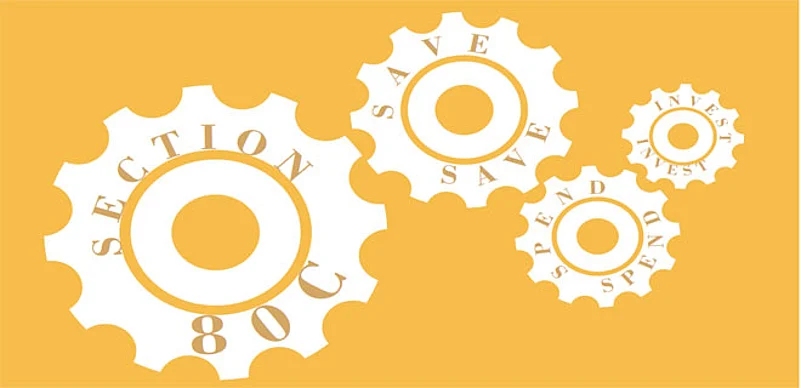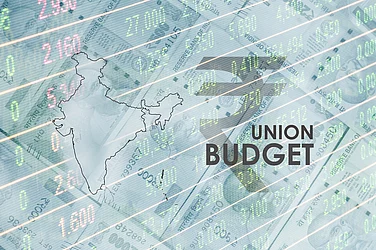The maximum tax savings of up to Rs 46,350 under Section 80C basket easily catches everyone’s eye. It is a different thing that this sum is for those at the highest tax bracket and not for those in the lower tax brackets. For taxpayers to optimise their tax liabilities there are several windows to save, invest and spend money and claim the tax rebate. The most popular is the Section 80C limit of Rs 1.5 lakh which offers plenty of choices to claim tax rebate. For scores of taxpayers, the choice of instruments available under this section becomes the only savings and investment avenue.
Advertisement
There are at least 14 instruments through which you can claim tax deductions under Section 80C. Some of the instruments that offer this benefit include the EPF, PPF, NSC, payment towards children’s tuition fees, ELSS, NPS, life insurance policy premiums, deposit in the Sukanya Samriddhi Yojana, and many others. That these can be categorised as savings, spending and investing alternatives can help taxpayers proportion their contributions accordingly to maximise their tax gains.
Confusing
It’s a case of problem of plenty when it comes to Section 80C. Not only is there a lot to choose from, the end result of each of the instrument varies with varying lock-in of monies. The shortest lock-in of three years is with the ELSS investments, whereas the longest is the NPS contribution, which can puzzle the smartest minds. It is common for many taxpayers to make the wrong choice of instruments to claim tax benefits under this section, resulting in difficulties with liquidity as well as a meaningful usage of the available tax benefits to their advantage in achieving financial goals.
Advertisement
Kolkata-based Amit Sengupta says: “My wife and I both have put money in safe and reliable financial instruments like PPF and NSC besides life insurance policies to save taxes.” The inherent bias towards safety most often than not leads to taxpayers ignoring larger benefits they can derive from other available options. The penchant to take life insurance policy to save taxes has resulted in life insurance being used for tax savings more than being a financial instrument to mitigate risk to one’s life.

Constraints
There is practical constraint when it comes to using the Section 80C benefits, especially for the salaried, who are part of the EPFO or contributions to the NPS. After the mandatory contributions, especially for those in the higher tax bracket, there is little left from the Rs 1.5 lakh-cap to utilise effectively. Take for instance, someone with a gross Rs 11.75 lakh annual salary will end up contributing Rs 96,000 towards the mandatory PF, and have Rs 54,000 in total to maximise the Section 80C benefits. However, routine expenses towards the education of two children would more or less wipe out the remaining sum to benefit from any of the other available tax saving option.
The pain can be more for those in the lower tax bracket, where the fight will be to save taxes or manage one’s regular household expenses. Chances are many taxpayers in the lower tax bracket would not be fully utilising even the Section 80C benefits and instead be willing to pay taxes, as that costs them less. Gurgaon based Prakhar Porwal says: “Saving taxes is priority, but there is hardly anything left to utilise after the mandatory provident fund contribution and premiums that I pay for life insurance.”
For instance, someone in the 10 per cent tax bracket earning gross Rs 4.7 lakh annual salary may find the mandatory PF contribution of Rs 48,000 on a basic Rs 4 lakh income too draining. And, although there is a window to save and invest Rs 1.02 lakh to maximise the Section 80C limit, many a time, they may not have that much left after meeting routine expenses. Suppose this person manages to use an additional Rs 30,000 by way of tax savings and defers contributing the remaining Rs 72,000 for optimal tax gains. In his case, he would be staring at a tax liability of about Rs 10,000. Paying this tax is far better than wiping out one’s earnings only to optimise tax savings.
Advertisement

What can you do?
To overcome this drawback, several taxpayers prefer taking a home loan to make the best use of tax savings under the Section 80C umbrella. The rebate that one can claim towards the repayment of interest on the loan is significant in the early years of the loan repayment, which does not burden with any additional tax savings. As the loan is used towards asset building by way of ownership of a house, it is a move that should be explored and used especially when there are additional tax benefits available on home loans for affordable housing.
Advertisement
As a taxpayer, it is in your interest to explore all the avenues through which you can deploy money to save tax under Section 80C and then select those instruments that will work for you. The other way is to also evaluate how much money you will lose by way of paying tax were you not to be bogged by locking in Rs 1.5 lakh. At the highest tax bracket, Rs 46,350 is what you save when you maximise the Section 80C benefit. The other way to interpret this detail—you lose if you do not put a single rupee into tax savings under Section 80C window. At lower levels, the tax liability will be relatively much lower.















 Just one email a week
Just one email a week